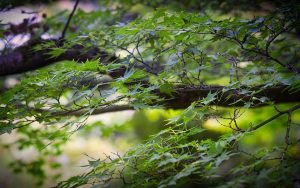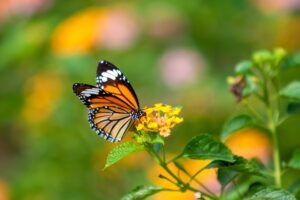
So much of modern life is conducted in artificial spaces–offices, cars, stores, parking lots. Individuals can spend days–perhaps even weeks–without their feet ever touching soil. We lose something when our connection to nature is severed, says Sara Southerland, holistic coach and sound healing practitioner.
Southerland will help people rediscover their ties to the natural world at a workshop on April 11 titled “Connecting with Nature: Elements as Guides.” A second workshop, offered May 4, will be titled “The Magic of the Moon.”
Southerland says that many of her clients find themselves experiencing a sense of disconnection within themselves. “Our lives are often about doing things, checking items off the to-do list. It’s nonstop,” she says. “I focus on helping people find ways to come home to themselves.”
One of the most powerful ways people can find wholeness, she says, is to reconnect with nature. By paying attention to the smallest details of the natural world, she says, “we can connect to something bigger than ourselves.”
Southerland believes the ancient concept of the four elements–earth, water, wind and fire–can become powerful guides. We experience the elements everyday, she says. “While we experience water through taking a shower or taking a drink of water, water also can help us learn how to flow in new directions and carve out new paths. Fire can keep us warm or cook our dinner, but it can also be the spark of a new idea–or it can be the fire that leaves us feeling burned out,” says Southerland.
Connecting with Nature:
Elements as Guides
April 11, 6-8 pm
Connecting with Nature:
Magic of the Moon
May 4, 6-8 pm
At Southerland’s April workshop, she will provide guests an introduction to the elements and their energies, she says. “Then we’ll explore them through different interactive practices, journaling and walking meditation.”
In an upcoming fall sessions, Southerland will dive deeper into the elements of water and earth. A scheduled May session will focus on the moon.
Each workshop will end with a sound bath, a type of healing music experience. “Everything around us has a vibration or a frequency that can be felt, measured or heard,” Southerland says. “Each of our emotions has a frequency. If we can shift that emotion using frequency and sound then we can call that healing.”
Southerland encourages workshop participants to bring a journal and a pen or pencil. She also recommendeds either a yoga mat or a blanket that individuals can use to sit or lie down on. You can learn more about Sara and her work at her website or on Instagram.
Meanwhile, remember that no matter how disconnected and overwhelmed you might feel, Southerland says, nature is always waiting to guide you home.







